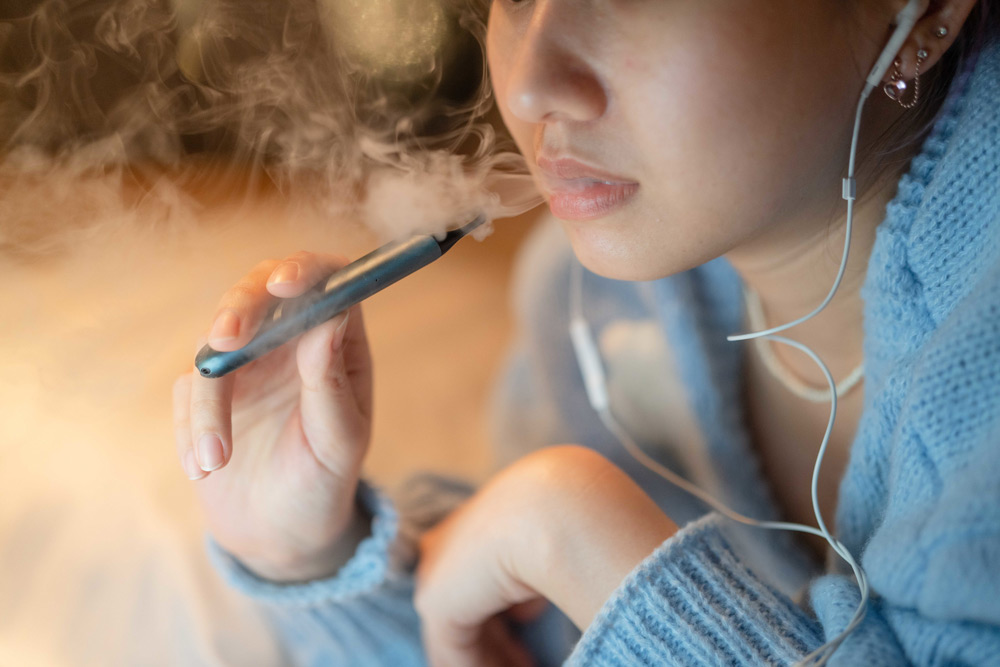My Teen Is Vaping — What’s the Big Deal?
Vaping has been around since the early 2000s as an alternative to smoking. It was initially meant to help people break the habit of smoking cigarettes, but today it’s becoming an increasingly popular trend for people who have never smoked. Adolescents and young adults are among the most vulnerable populations associated with vaping.
What exactly is vaping?
There’s a variety of vaping devices on the market, but the concept is typically the same — a solution is heated into a vapor for easy inhalation. These solutions are known as vape juice or e-salts.
Although advertised as harmless, the solutions come with a risk. When tested they have been shown to include propylene glycol/glycerol, nicotine, and flavoring agents that have known carcinogens such as benzaldehyde.
Besides nicotine, other mind-altering chemicals can be found in vape solutions. Depending on the legal status, tetra cannabinoids, the psychoactive ingredient in marijuana, can be found commercially. Both marijuana and fentanyl have also been found in solutions and devices that are purchased from unreliable sources. These substances could be known or unknown to the consumer.
What’s the big deal?
As time has passed, we are starting to better understand the risks of vaping; although, we don’t yet know them all. EVALI (E-cigarette or vaping use-associated lung injury) is lung tissue damage caused by vaping. In some cases, this can heal on its own, in other cases a lung transplant is necessary.
The majority of EVALI illnesses and deaths have been associated with black-market tetra cannabinoid use. There’s a higher rate of illness and death because these products may contain impurities, such as vitamin E, linked to lung injury. However, when products are purchased second hand you may not know that these added chemicals are there.
Also, there have been reports of deaths and poisonings secondary to nicotine overdose. These have been either the result of intentional overdose with the refillable vape juice or inadvertent exposure to the highly concentrated juice by young children.
Additionally, studies show that vaping makes you more susceptible to using conventional cigarettes. More intense cases of addiction are because of how quickly chemicals hit the brain and how potent the levels of nicotine in the devices are.
Oh, and let’s not forget about the possible explosion that could happen with the batteries.
Does vaping cause life-long damage?
We know that nicotine addiction can have long-term health effects. EVALI is treatable in the acute setting but can often have significant long-term complications. Research available suggests if people quit, they do have improved lung function. However, the long-term effects are still unknown.
How do I know if my child is vaping?
It can be difficult to know if an adolescent is vaping because vapes are small and easy to hide. When vapes are in use they don’t always have a specific smell. If your child develops a cough and has a change in perception of flavor, that may indicate possible vape use. They may also seem more distracted or have higher levels of stress or anxiety. Learn the “Signs Your Child is Using Nicotine and How You Can Help.”
How do I talk to my child about vaping?
It can be a tough subject to approach. The important thing is to be open with your child about the risks of vaping and the effects of peer pressure. Create an environment where you can have an open and honest conversation. You can also use your teenager’s well-child exam as a starting point for the conversation. Don’t be afraid to include your primary care provider in the discussion to offer additional information and help assist with quitting. Let them know there are resources available.
Resources
- CentraCare’s Tobacco Treatment Program provides both medication and counseling by specially trained providers. Visits can be done both in person and via video visit.
- Quit Partner is Minnesota’s free way to quit nicotine, including smoking, vaping, and chewing. They can support your quit with one-on-one coaching and other helpful tools. Check out My Life, My Quit for a program specifically designed for teens.
- “This is Quitting” designed by the Truth Initiative has helped more than 500,000 youth and young adults to quit vaping. Youth can join for free by texting DITCHVAPE to 88709.
